Asset Details Enhancements
Asset Details Plugin is enhanced based on your feedback.
- Enhanced User Interface: Asset Details, Notes and Future Work Orders are now displayed in a more intuitive manner. Most recent data on Asset Notes, History and Work Orders is displayed on the main page with an ability to view all, if needed.
- Support of Maintenance Cloud Work Orders: In 23C release, we added out-of-the-box support for Fusion Service Work Orders i.e. work orders generated and processed via Fusion Service, Field Service and Service Logistics flow. This plugin is now enhanced to also support work orders generated and processed via Maintenance Cloud and Field Service. This means that the Plugin is designed to access multiple work order objects and associated data, without requiring customers to do any development effort. This includes;
- Asset Notes
- Upcoming Maintenance Work Order Data:This information includes Work Order Operations and Resources scheduled for future maintenance tasks.
- Historical Maintenance Work Order Data: Historical maintenance work order data. This includes past Operations and Resources utilized in completed maintenance tasks.
Asset Details section
Asset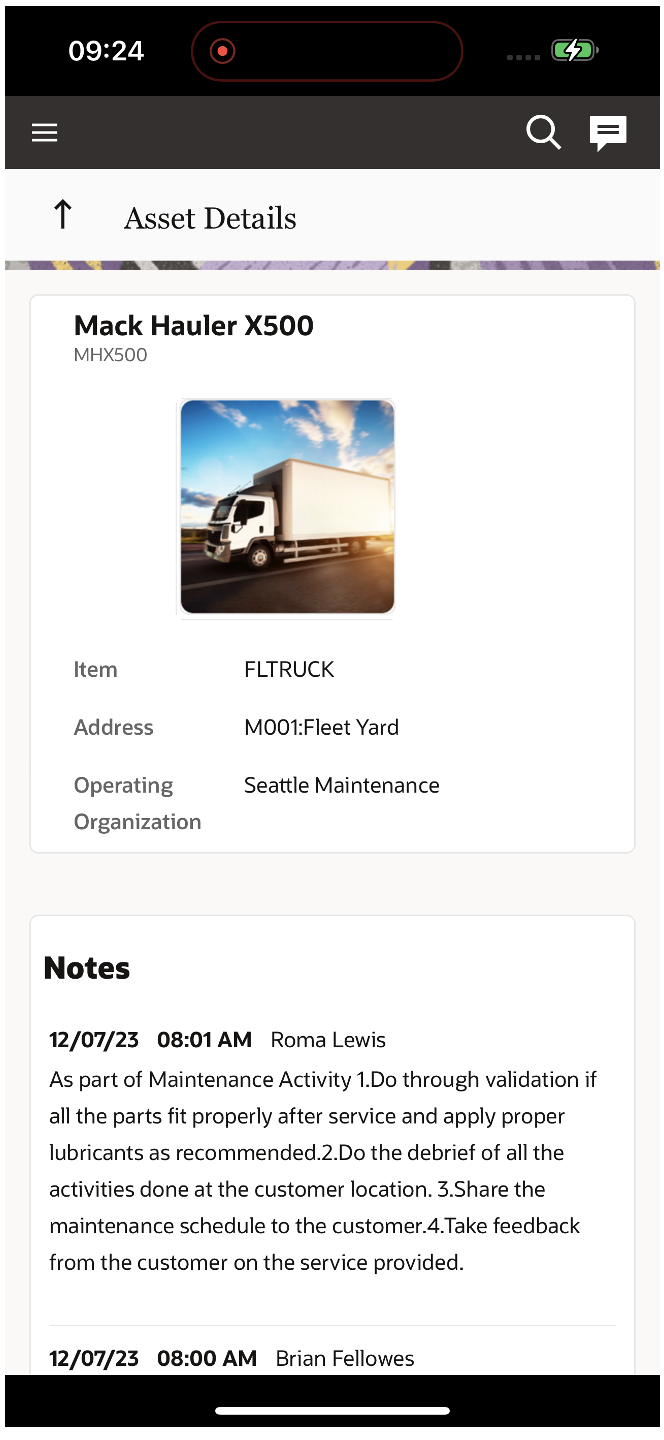
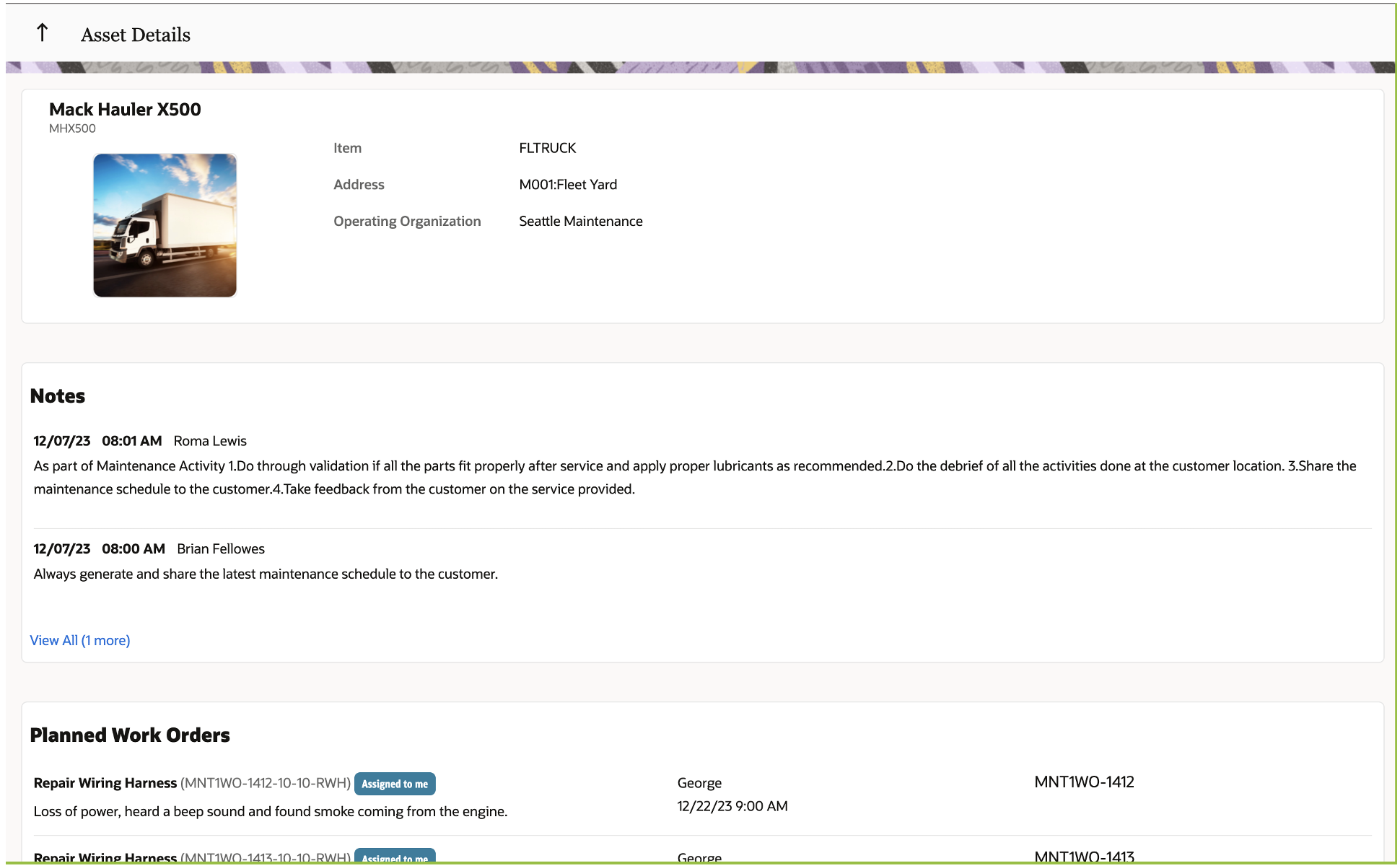
Asset Details section includes the following information
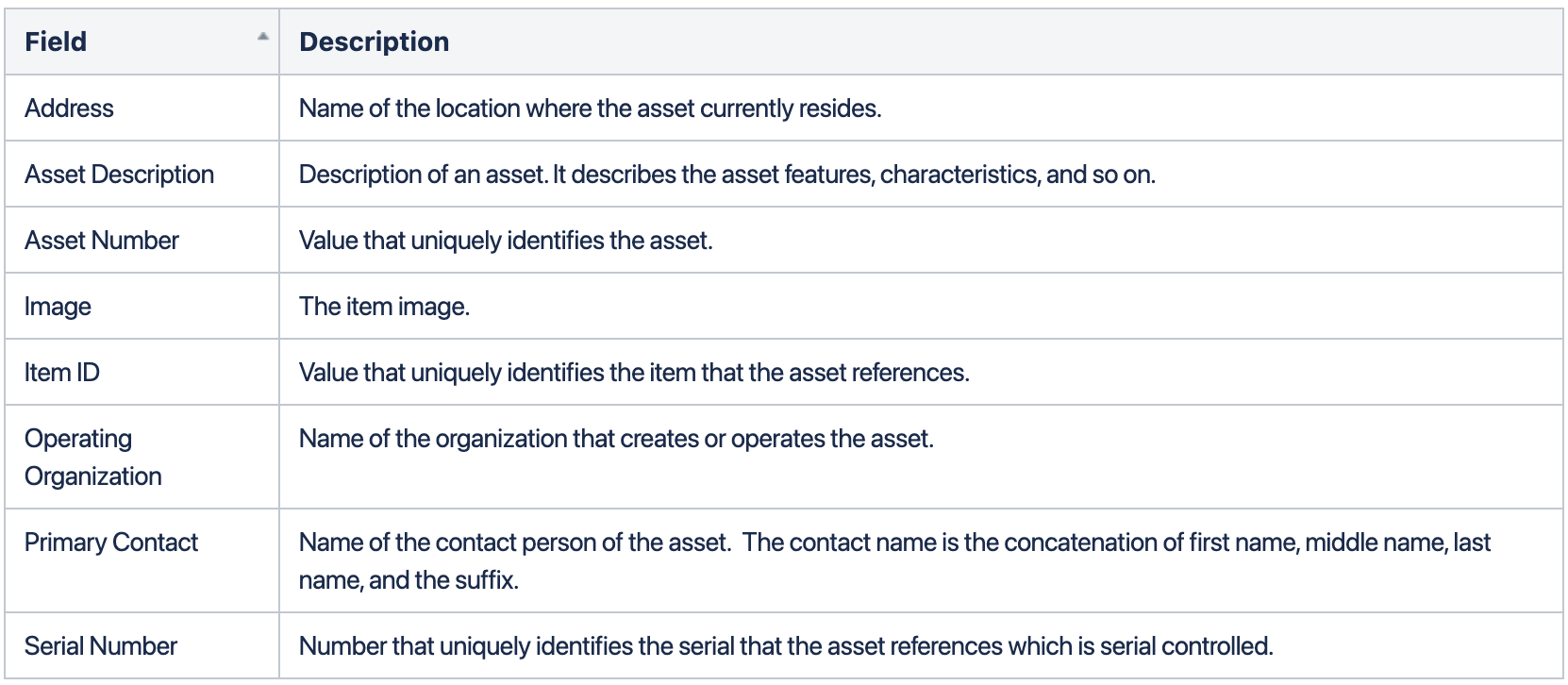
Notes section
The 'Notes' section displays asset notes of a specified notes code configured in the plugin parameter. Additionally, any notes with a visibility set to 'PRIVATE' are filtered out. The following table lists the fields associated with notes.
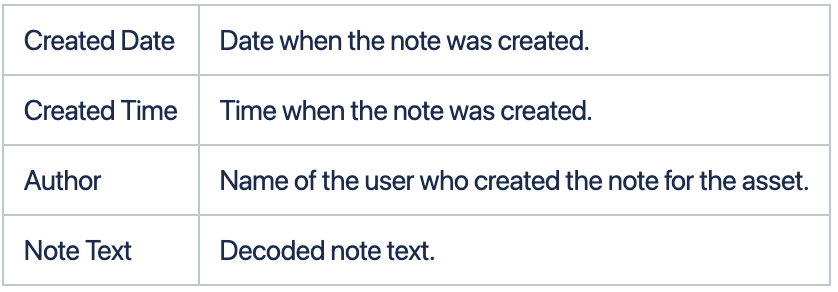
The two most recent notes for the asset are displayed on this screen, followed by a 'View All' link and the total number of notes.

'View All' allows access to all notes. The View All screen displays a maximum of 15 notes.


Planned Work Orders
This section displays a summary of Maintenance Work Orders for the asset. In OFS, a Maintenance Work Order may be represented by multiple activities corresponding to various maintenance operations or resources. When multiple activities are present in a work order, the most relevant one is showcased in the Planned Work Order section.
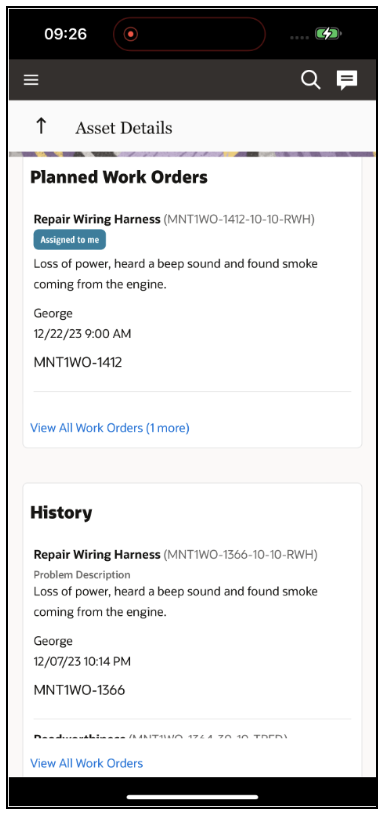

The following table lists the Planned Work Order fields.
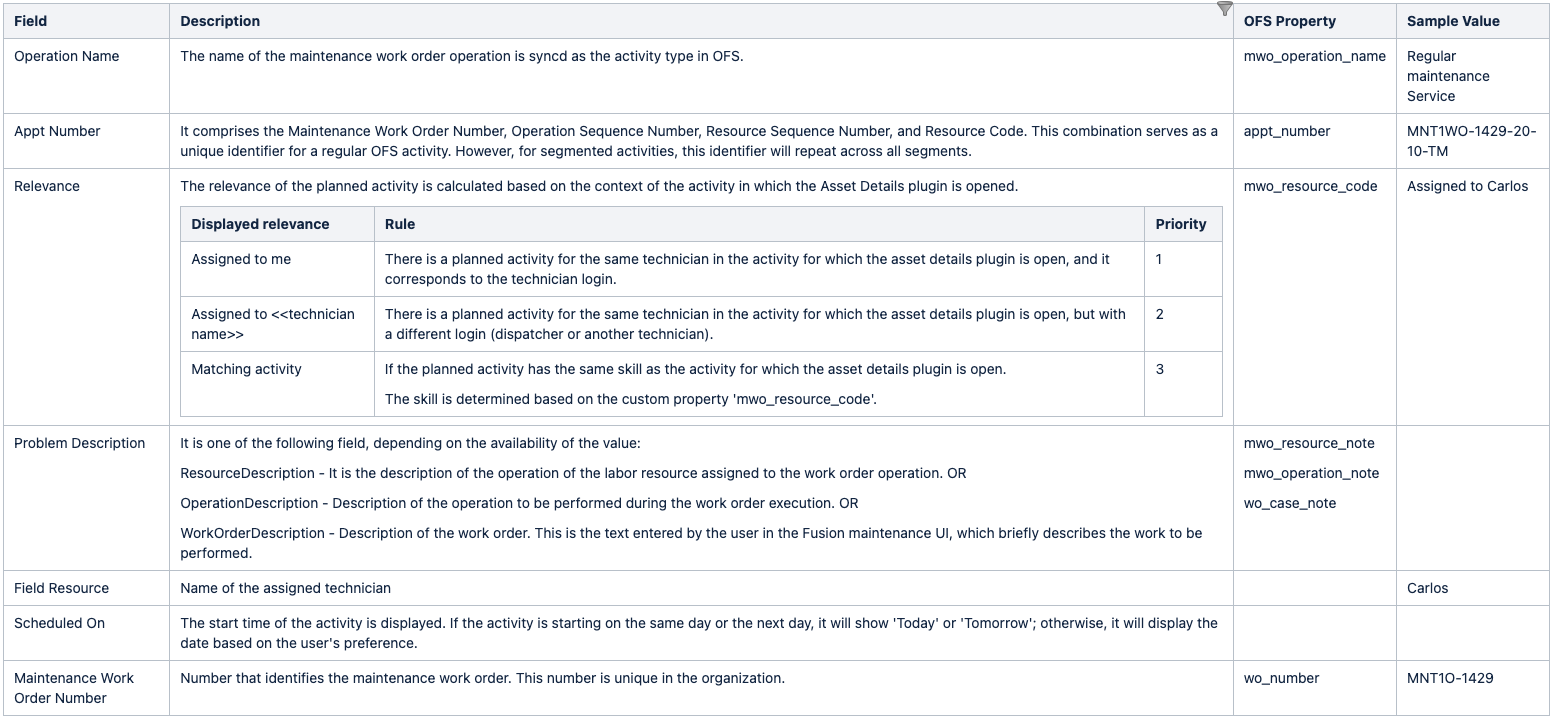
If there are more than 2 planned work orders, the Planned Work Orders section will include a 'View All Work Orders (<count> more)' link. Clicking the link opens a new full-page popup displaying all the work orders planned within a date range (based on the plugin parameter - plannedActivityMaxDays).
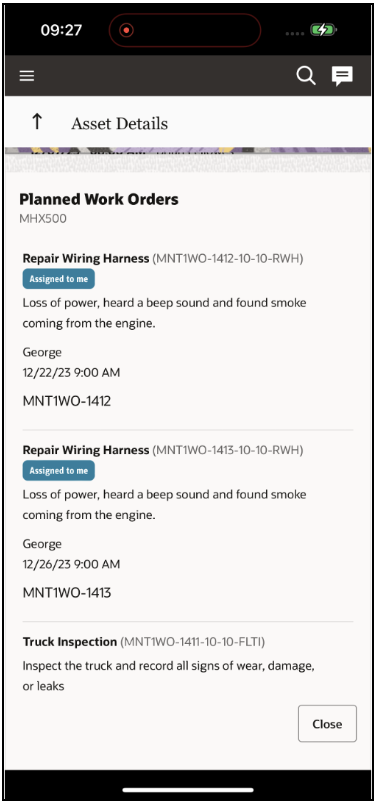
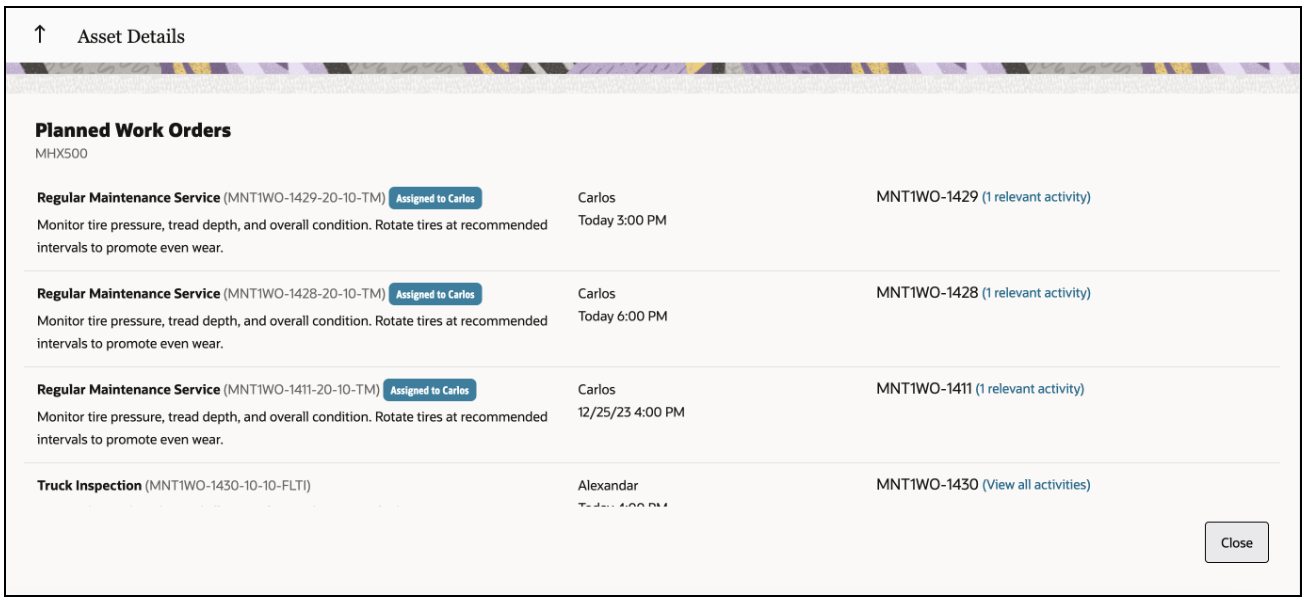
If there is more than one activity present in the work order, and among them, a few are relevant to the technician, a clickable link near the work order number will indicate '<relevantActivityCount> relevant activity/ies.' If there are no relevant activities, the link will read 'View all activities.' Clicking the link will load a page with details of all planned activities in the work order.
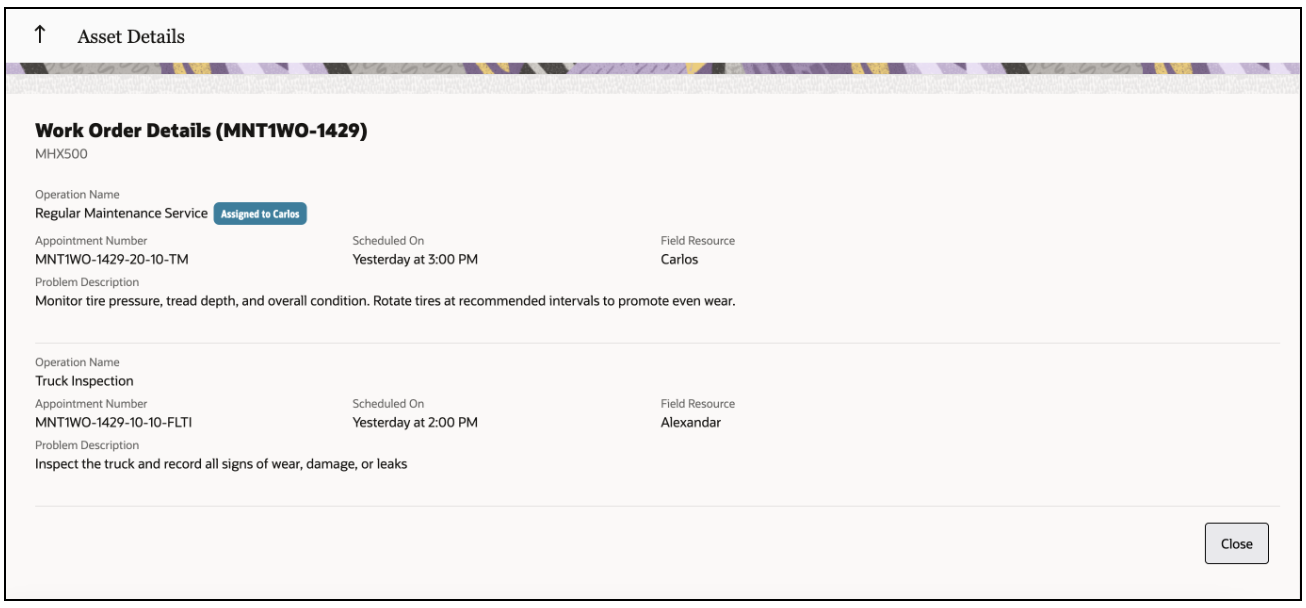
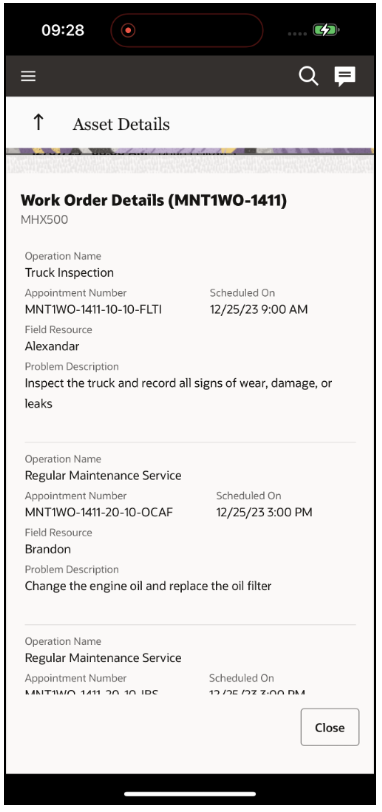
History
The History section displays the completed activities of this asset. The following table lists the History Work Order fields.
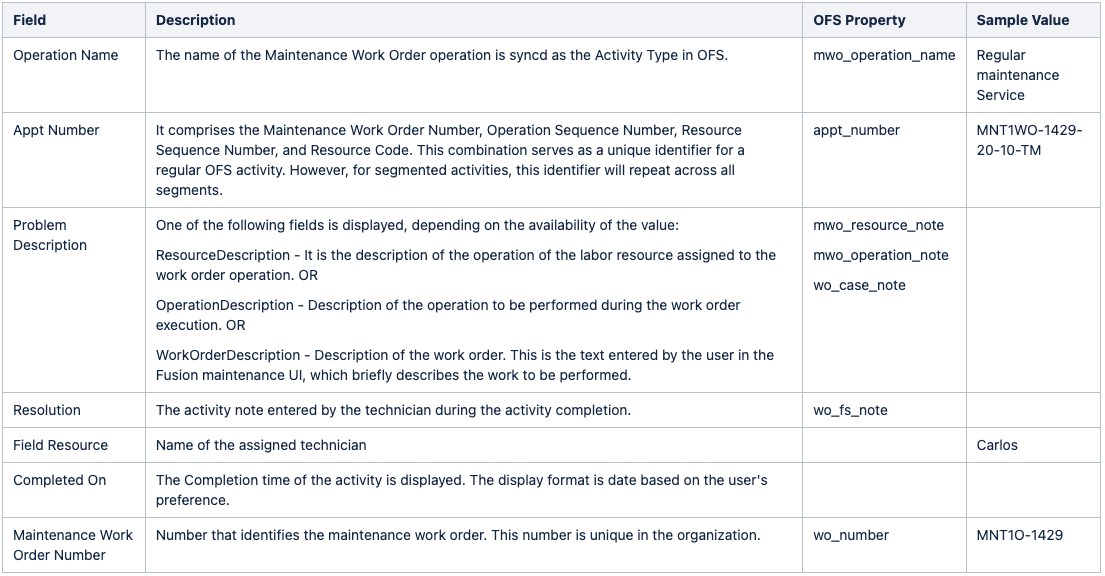
The History section displays the two most recent work orders and a 'View All Work Orders' link.

'View All Work Orders' link displays the most recently completed activity from each work order within the past 90 days.

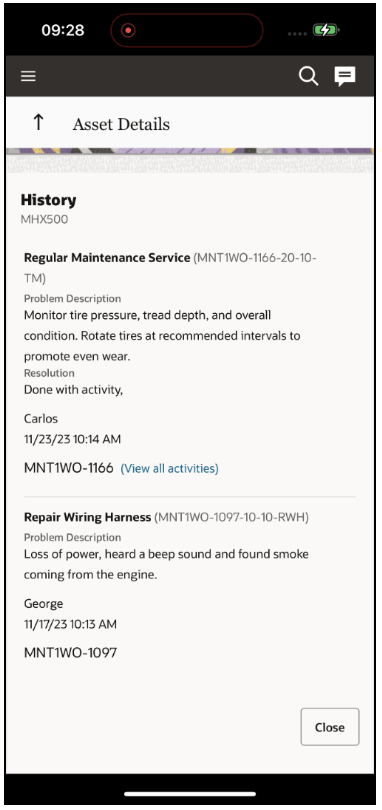
Users are also able to 'View all activities' if a work order consists of multiple activities.
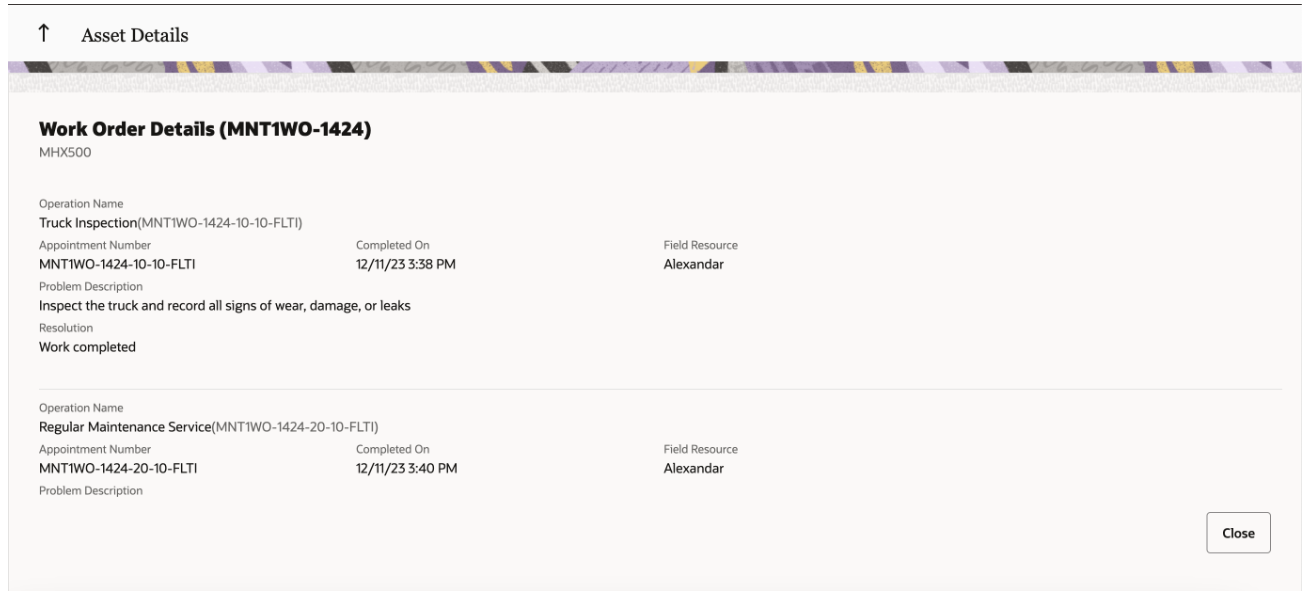
Business Benefit
Mobile resources and dispatchers can now use the Asset Details standard plugin to get complete insight into an asset while working on an activity, enabling them to work more efficiently on the asset.
- Achieve KPI goals such as first-time resolution and customer satisfaction
- Empower your field resources by providing them readily available information needed to perform their job successfully and to make prompt decisions
- Visibility into the future work orders provides optimal assignment, such as helping mobile resources perform any upcoming work while they are already onsite. This can be defined and configured in OFS by utilizing the self-assignment functionality that is already available.
- Enhance user and customer experience
- Faster implementation - Plugin can be implemented as-is without any development effort, whether Fusion Service is being utilized or Maintenance Cloud. The same plugin can also be integrated with the 3rd party solutions
- Consistent dataflow, use case flow and user experience for Field Service users whether the Work Order object is generated via a call center operation in Fusion Service or via a maintenance plan in Maintenance Cloud.
Steps to Enable
Steps to Enable
- Install the Asset Details Plugin: The out-of-the-box Asset Details Plug-in is available in Configuration within Oracle Field Service. Follow these steps to install the plugin.
- Click Configuration > Forms & Plugins.
- Click Add Plugin.
- Click Standard Plugin and then click Next.
- Click Asset Details Plugin.
- Click Install and confirm the installation.
During the installation process, the following sections are displayed:
- Properties will be installed. These are the properties that are automatically installed with the plug-in. These properties will be available in Configuration/Properties. If you un-install this plug-in in the future, these properties will still be available in the Properties page.
-
Existing properties will be used. These properties are required and are already available in Oracle Field Service.
As part of Asset Details plugin, the following Activity and Resource properties are installed and used.
Activity Entity Properties
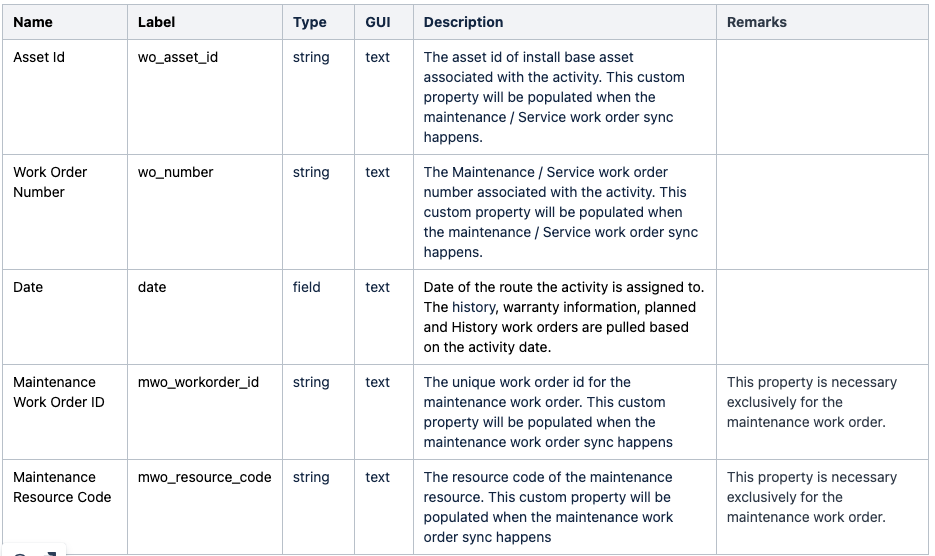
Resource Entity Properties
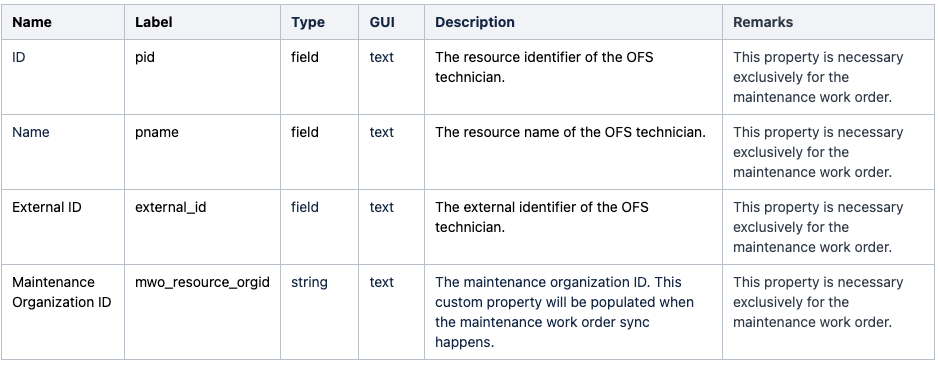
Modify the Plugin Parameters of Asset Details Plugin
- Configuration / Forms & Plugins.
- Search for the Asset Details plugin.
- Click the actions icon and then click Edit.
- On the Edit Plugin page, change the details below as required and click Update.

Create Fusion and OFS User
Field Service API Role and Permissions: The OFS user, created through the "REST/SOAP API Application" configured in 'ofsRestClientId,' should have the following entities enabled.
Core API should have the following entities enabled
- Activity - RO
- Resource - RO
Meta Data API should have the below mentioned entities enabled
- Property - RO
Fusion API Duty Roles, Privileges and Data Security
The Fusion user ( configured in the 'fusionLogin' secure parameter ) should have these roles configured.
- ORA_PER_EMPLOYEE_ABSTRACT
Data Security Policy - Global Grant on the Asset Object

Duties to be configured are as follows

Add Properties to be Indexed for Search
To enable the search API functionality, add the following properties as indices for the activity search API. This can be accomplished by navigating to OFS / Business Rules / Search / Activity Search Fields and adding the specified properties.
-
Asset Id (wo_asset_id)
-
Work Order Number (wo_number)
- CORS setting in Fusion: To enable CORS in Fusion Applications, set profile option values for the CORS header "Access-Control-Allow-Origin". Refer to Fusion CORS Setting
- CORS setting in OFS: To enable CORS for the REST user , set the "Allow Cross-origin resource sharing (CORS) from the following web domains" in the applications screen. Refer to OFS CORE Setting
REST APIs
SCM
- /fscmRestApi/resources/11.13.18.05/installedBaseAssets/
-
/crmRestApi/resources/11.13.18.05/customerWorkOrders
-
/crmRestApi/resources/11.13.18.05/entitlements
-
/crmRestApi/resources/11.13.18.05/products/300000180787975/child/ProductImageAttachments
OFS
- /rest/oauthTokenService/v2/token
-
/rest/ofscCore/v1/activities/custom-actions/search
-
/rest/ofscCore/v1/activities
-
/rest/ofscCore/v1/resources/
-
/rest/ofscMetadata/v1/properties
Tips And Considerations
Tips & Considerations
- If you are already using the productized version of Asset Details Plugin, uninstall the current version and then install the latest version in order to access the latest enhancements
- The Asset Details plugin for the Maintenance Work Order is based on the values in the custom properties synchronized by the Maintenance Work Order integration. Therefore, the maintenance work order should be created in OFS via the Maintenance Work Order OIC integrations to access the details via this "Asset details" Plugin